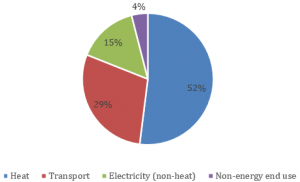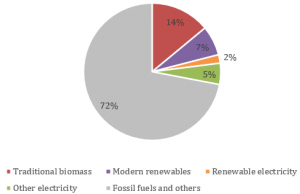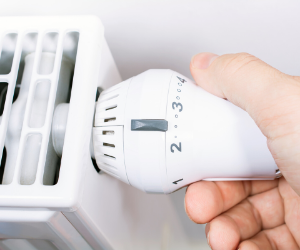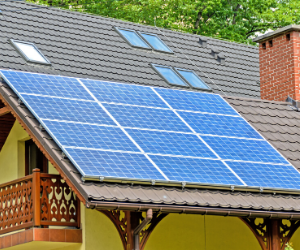WEMC Member Blog: Decarbonising Heating – Need for urgent action and measures
 The World Energy & Meteorology Council (WEMC) has members across the globe, from a variety of backgrounds and expertise, doing work on a range of important issues to strengthen energy and meteorology education, research and collaboration. We welcome posts from our members communicating the fantastic work that they do.
The World Energy & Meteorology Council (WEMC) has members across the globe, from a variety of backgrounds and expertise, doing work on a range of important issues to strengthen energy and meteorology education, research and collaboration. We welcome posts from our members communicating the fantastic work that they do.
We are delighted to share this post written by Dr Kapil Narula, a WEMC member who is Senior Researcher, Energy Efficiency, University of Geneva. Interested in becoming a WEMC member? It’s free! Find out more here.
Published: 29th June 2020
Decarbonising Heating: Need for urgent action and measures
Dr. Kapil Narula (Senior Researcher at the University of Geneva & WEMC Member). Edited by Kit Rackley and Lucy Haughey.
The Special Report on global warming of 1.5°C by the Intergovernmental Panel on Climate Change (IPCC) notes that human-induced warming reached approximately 1°C above pre-industrial levels in 2017, and is likely to reach 1.5°C between 2030 and 2052, if it continues to increase at the current rate. Limiting global warming is of utmost concern as the impending risks from climate change threaten societal structures, economic systems and environment.
The Paris climate agreement in 2015 catalysed global action for mitigating climate change. Majority of countries agreed on the need for global peaking of emissions, “as soon as possible” and committed to work towards “achieving a balance between GHG emissions and its removals in the second half of the 21st century”.
Following this commitment, six countries have introduced a legally binding goal of net zero GHG emissions, to be achieved by 2050, and legislation has been proposed in three countries and the European Union (EU). In eleven countries, including Switzerland, the target of net zero emissions is not legally binding, but has been included in policy documents. The Energy and Climate Intelligence Unit (ECIU) reported that about 121 nations (including regions and cities) have an actual or intended net zero target. Norway and Uruguay plan to achieve net zero GHG emissions by 2030 while Finland (by 2035), and Iceland (by 2040) also have ambitious plans.

Fig. 1. Share of energy consumption by end use in global TFC of energy (2015)
Global emissions from heating and heat demand
Energy use contributed to about 75% of global GHG emissions (without accounting for forestry and other land use) in 2015. The total final consumption (TFC) of energy in 2015, globally, was around 9500 million tonnes oil equivalent (mtoe) and the share of energy end use is shown in Fig. 1.
It is seen that the share of heat in TFC is higher than all other end uses combined. Hence, in order to restrict temperature rise to 1.5°C, it is essential to decarbonize the heating sector.

Fig. 2. Energy sources for heat (2015) (Data source: Collier, 2018)
Dependence of heat supply on fossil fuels
Unlike the electricity sector where technologies to harness renewable energy like solar PV and wind have caught on, the heating sector continues to be dependent on fossil fuels to a large extent. The share of fossil fuels in global heat supply in 2015 was about 72% and is shown in Fig. 2.
Traditional forms of biomass are primarily used for cooking and as of 2015 contributed to 14% of the global TFC of heat. Renewable sources contributed to less than 10% and therefore a big transition is required to decarbonise heating.
Options for decarbonisation of heating
Some of the strategies for decarbonisation of heating were presented in detail in the context of Switzerland (Narula et al., 2019). A joint project between University of Geneva, Switzerland and University of Exeter, UK on policies for decarbonising residential heating at the time of a climate emergency has also been launched. Some options for decarbonisation of heating are briefly presented ahead.
 Building retrofits and efficient heating systems
Building retrofits and efficient heating systems
It is estimated that about 50% of the global heat consumption is used in the buildings sector for space heating and domestic hot water while about 46% is used in the industry. While the consumption of hot water in residential buildings is between 90-160 litres per occupant per day, there is a large variation in specific energy consumption for space heating in buildings. Highly energy efficient energy buildings generating their own renewable energy may consume net zero energy over the year, while poorly insulated old buildings may consume up to 200 kWh/m2 in a year. Building retrofits and renovation lead to reduction of specific heating demand in buildings and is therefore considered as the first and the most important step for decarbonising heating, followed by improvement in technical efficiency of heating systems.
Heat distribution
District heating (DH) systems offer centralised heat distribution, especially in dense city areas and provide a cost effective alternative to decentralised sources of heat such as oil & natural gas boilers. DH systems are multi-energy systems, which can integrate various heat sources like waste heat from industry and incinerators, combined heat and power plants and renewable energy (e.g. geothermal heat). The choice of centralised or decentralised heating system depends on heat demand density and DH systems offers flexibility and easy integration of low carbon sources of heat.
 Zero carbon sources and technologies
Zero carbon sources and technologies
Zero carbon sources of heat include geothermal energy, solar heat using thermal collectors, waste heat, ambient heat sources such as ground, air and water, extracted using heat pumps, and electrical heaters powered by renewable electricity. Biomass is also an important zero carbon source of energy. Biomass can be converted to bio-methane using a gasification process; sludge and animal manure can be converted to biogas using a process of anaerobic digestion; and organic waste can be converted to combustible gas in landfills. Although heat pumps, solar thermal collectors and electric heaters can be deployed as decentralised heating systems in buildings, but geothermal energy and waste heat need to be distributed via DH systems.
Conclusion
It is evident that decarbonising of heating is not a choice, but a necessity to mitigate global warming. Adoption of the goal of net zero GHG emissions by many countries is therefore a step in the right direction. More than half of global final energy is used for heating and fossil fuels are dominant heat sources, resulting in large GHG emissions. Hence, decarbonisation of heating is a prerequisite for achieving the goal of net zero GHG emissions.
Energy efficiency in buildings by renovation of existing building stock should be the foremost step and needs to be prioritised. DH offers a centralised way for heating and can integrate multiple energy sources while providing flexibility. While there are many zero carbon sources of heat and technological options available, there is no ‘one size fits all’ solution for decarbonising heating.
References:
Collier, Ute. 2018. “Renewable Heat Policies Delivering Clean Heat Solutions for the Energy Transition.” IEA Publications. https://doi.org/https://www.iea.org/publications/insights/insightpublications/Renewable_Heat_Policies.pdf.
Narula, Kapil, Jonathan Chambers, Kai N. Streicher, and Martin K. Patel. 2019. “Strategies for Decarbonising the Swiss Heating System.” Energy 169 (February): 1119–31. https://doi.org/10.1016/j.energy.2018.12.082.
You can follow Dr Kapil Narula and his work via LinkedIn. To lend your thoughts and expertise to this opinion piece, become a member and you can make connections and facilitate collaboration.
Disclaimer: This post represents the views of the author and do not necessarily reflect the view of WEMC or any other agency, organization, employer or company.
WEMC Member Guest Blogs & Contributions:
- Decarbonising Heating: Need for urgent actions and measures (June 2020) – Dr Kapil Narula, Senior Researcher, University of Geneva
- NOAA Supports Commercial Development of Subseasonal Forecasts Applications (June 2020) – Jan Dutton, CEO, Prescient Weather
- Weather insurance for farmers: what is it and when to buy? (May 2020) – Elena Maksimovich, Data Analyst & Marine Scientist, Weather Trade Net LLC
- Climate services for a renewable future in West Africa (December 2019) – Sebastian Sterl, Researcher on Energy & Climate, Free University of Brussels (VUB)
- How hydrological cycles impact the worldwide energy industry (November 2019) – Vasilis Pappas, Senior Meteorologist, Trianel GmbH
- Should every company be considered an ‘energy company’? (October 2019) – Michael Ferrari, Managing Partner & Principal of Atlas Research Innovations
- The Climate Pocketbook: An example of educational outreach from experts (August 2019) – Sebastian Sterl, Researcher on Energy & Climate, Free University of Brussels (VUB)
- Malawi-UK Teacher Partnership Focuses on Clean, Affordable Energy (August 2019) – Noel Banda, Meteorologist & Climate specialist, Malawi Department of Climate Change and Meteorological Services
- Global Wind Atlas wind resource maps now available for every country (January 2019) – Oliver Knight, Senior Energy Specialist, The World Bank
- Prescient Weather’s World Climate Service launches “significant upgrade” (December 2018) – Jan Dutton, CEO, Prescient Weather



